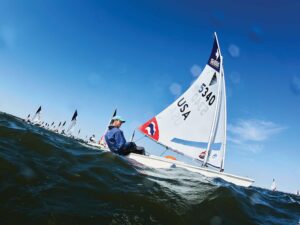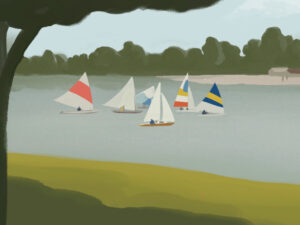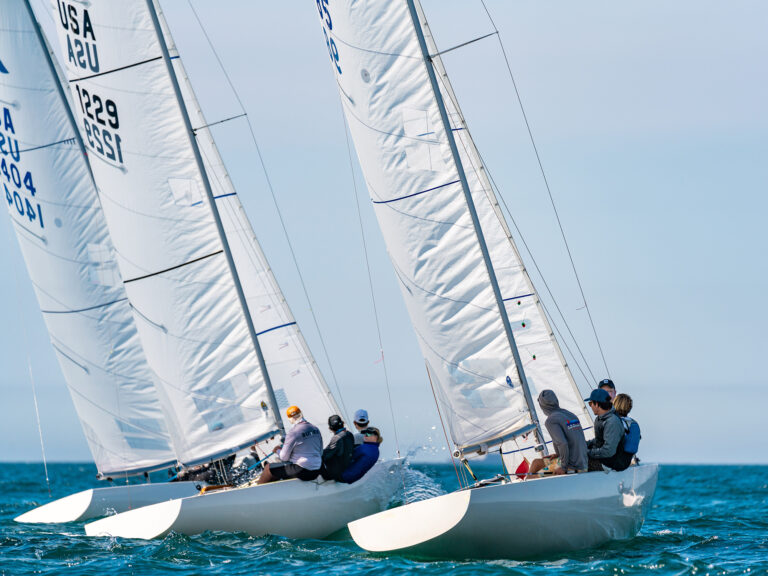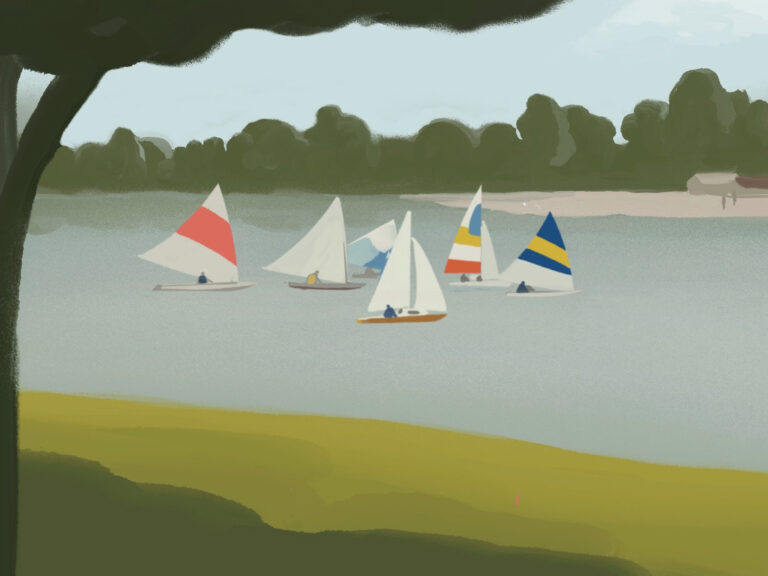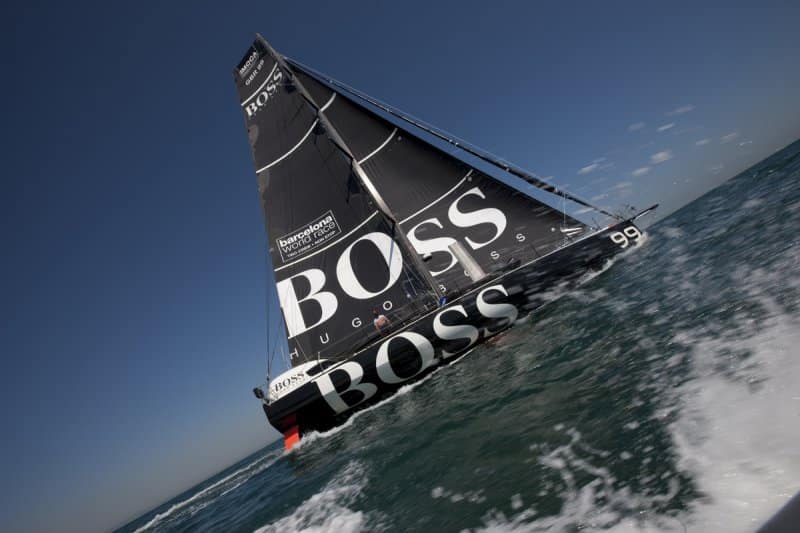
120305_HugoBoss_Lloyd
**The Vendée Globe, the only non-stop, solo, around-the-world-race, could be sailed in a 60-foot one-design for the 2016 edition. **After a long history as a crucible of offshore innovation and refinement, the International Monohull Open Class Association is considering whether to scrap its famously loose box rule for a much tighter rule intended to create boats that are more affordable and safer.
This decision will be a main point of discussion during an IMOCA committee meeting to be held later this year, possibly in June. Until then, IMOCA and Vendée Globe organizers, sponsors, competitors, and marine industry partners are all doing what they can to make sure their opinions are heard. It’s too early to say just what exactly is on the table, how much the rule might be tightened, if it is at all. The subject of discussion now is whether to replace the existing IMOCA design rule or not. Denis Horeau, director of the Vendée Globe, pointed to the burgeoning MOD70 one-design trimaran as a potential template, but also stressed that no decisions have been made even about what changes will be considered.
Proponents say that that a one-design class would make the Vendée Globe more accessible for competitors who have the talent and experience to compete on the circuit, but who do not have the connections to amass the required multi-million dollar budgets to do it right. They point out that IMOCA is also too French-centric, with French engineers dominating the design circuit, and it’s virtually impossible for non-French sailors to mount a credible campaign. A one-design would eliminate a lot of the research and development challenges and attract more competitors from outside of France, as is the case with the Figaro circuit, which is sailed in 33-foot, Beneteau-built, one-design keelboats.
A tighter rule would make the Vendée Globe safer, proponents add. There would be less room to experiment with new design technologies that can make the boats go faster, but also make them more prone to failure. During the last Vendée Globe, only 11 out of 30 boats finished.
Many also say that a one-design will help return the Vendée Globe to its roots. In the early editions of the race—which was first run in 1989, and every four years since 1992—non-professional sailors were able to round up a few hundred thousand dollars and not only finish, but come within striking distance of winning. Today, a non-professional like Jean-Luc van den Heede, who took a leave of absence from his job as a school teacher to place third in the 1989-1990 Vendée Globe, wouldn’t stand a chance of making the podium. But then again, what exactly is the true soul and spirit of the Vendée Globe? For two-time winner Michel Desjoyeaux, the race is a testing ground for the fastest boat technologies and the world’s most-skilled offshore sailors. Using a French expression that translates well into English, Desjoyeaux said that one-design proponents should not be allowed to “saw off the branch on which everyone now sits.”
“Why should we break the IMOCA class?” Desjoyeaux said. “For me, the Vendée Globe is about technology and sailing skills and the IMOCA class serves both well.”
If a one-design is going to cost $270,000 or $400,000 less, Desjoyeaux continued, that is not nearly enough of a discount to make sponsorships that much more accessible than they are today.
However, Desjoyeaux did express an interest in the addition of a class similar to Class 50-sized boats that took place in the race prior to 2004. These boats, he said, would cost less than half of what IMOCA Open 60 boats cost.
Horeau is one of the prime proponents of moving toward a more one-design boat, although he insists that this is his opinion, not one necessarily held by the Vendée organization or IMOCA. Horeau says that a one-design IMOCA class boat would save more than just a few hundred thousand dollars for a Vendée Globe competitor. Building a typical IMOCA 60-footer costs between $3.75 million and $4.7 million. On top of that, teams need to spend 30 percent of the boat’s book value on R&D. The move toward a one-design hull would virtually eliminate these R&D costs.
Desjoyeaux pointed out that this would put many people, especially in France, out of work. In France, there is an entire cottage industry of engineers whose livelihoods depend on preparing boat designs and technologies for IMOCA boats.
“A monotype boat design would mean that many people will not eat,” Desjoyeaux said. “That is something [one-design backers] are not mentioning.”
Horeau counters than the future of the IMOCA class and the Vendée Globe are at stake. “The IMOCA is dying,” he said. “The Vendée Globe remains the main race of the fleet and needs the monotype category. If you do not race in the Vendée Globe, then you can’t survive.”
Despite the popularity of the other races in which IMOCA boats compete, such as the Route du Rhum, the Transat Jacques Vabre, and the Quebec-St Malo, Horeau estimates that 60 to 70 percent of a sponsor’s return on investment in an IMOCA campaign is derived from the Vendée Globe. “IMOCA is really about the Vendée Globe,” Horeau said, “since sponsors spending several million dollars need the Vendée Globe to make it worth their while.


